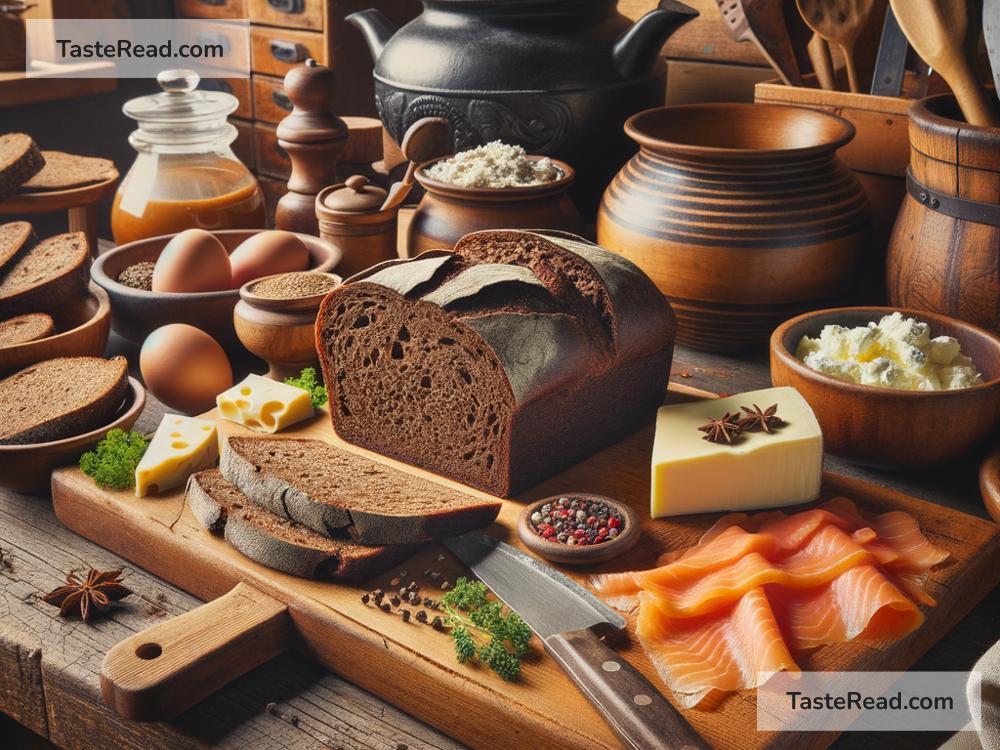Title: Indulging in Hearty Pumpernickel Recipes in Traditional German Kitchens
Germany is famous for many things: picturesque landscapes, timeless traditions, and a culture rich in culinary delights. Among its treasured foods, bread stands out as a true hallmark of German cuisine. In the heart of traditional German kitchens, pumpernickel bread takes center stage. This rich, dark bread is not just a staple but a symbol of hearty, wholesome meals. Today, we’re diving into the world of pumpernickel bread, exploring its history, unique qualities, and delicious recipes that you can enjoy at home.
The Story of Pumpernickel Bread
Pumpernickel bread has its roots in Westphalia, a region in northwestern Germany, and its history goes back centuries. It was originally baked in traditional brick ovens, where the dough was cooked slowly for up to 24 hours. This slow baking process gave pumpernickel its deep, dark color, smooth texture, and slightly sweet flavor.
What sets pumpernickel bread apart is its use of coarse rye flour, which is rich in fiber and nutrients. Unlike other breads, pumpernickel doesn’t rely on added sweeteners or artificial colors. The dark color develops naturally during the long baking process. Its hearty texture and rich flavor make it a perfect choice for a variety of meals, from simple snacks to elegant dishes.
The Warm Charm of Traditional German Kitchens
Traditional German kitchens are filled with the aroma of freshly baked bread, simmering soups, and rich stews. Family meals are often enjoyed around rustic wooden tables, creating a sense of warmth and togetherness. Bread, especially pumpernickel, plays a starring role in these gatherings.
In Germany, pumpernickel is more than just bread—it’s part of a lifestyle. It’s often paired with flavorful spreads, meats, cheeses, and fresh vegetables, giving people a convenient and nutritious way to create satisfying meals. The sturdy texture of pumpernickel also makes it a great base for open-faced sandwiches, or “belegte Brote,” which are popular throughout the country.
Simple and Delicious Pumpernickel Recipes
Bringing the taste of Germany into your home is easier than you think. Here are a few simple recipes featuring pumpernickel bread that capture the spirit of hearty German cooking.
1. Pumpernickel and Smoked Salmon Canapés
This recipe is perfect for appetizers or a light lunch. The earthy flavor of pumpernickel complements the smoky, savory taste of salmon.
Ingredients:
– Pumpernickel bread, cut into small squares
– Cream cheese
– Smoked salmon
– Fresh dill for garnish
– Lemon wedges
Instructions:
1. Spread a generous layer of cream cheese on each square of pumpernickel.
2. Top with a slice of smoked salmon.
3. Garnish with a sprig of fresh dill.
4. Serve with a wedge of lemon for an extra burst of flavor.
2. Traditional German Pumpernickel Sandwich
Known in Germany as a “Brotzeit” meal, this simple recipe is both nutritious and filling.
Ingredients:
– Pumpernickel bread slices
– Sliced ham or turkey
– Swiss cheese or Gouda cheese
– Pickles
– Butter or mustard
Instructions:
1. Spread butter or mustard on one side of the pumpernickel slices.
2. Layer ham or turkey, cheese, and pickles.
3. Place another slice of bread on top to complete the sandwich.
4. Serve with a small side salad or a cup of soup.
3. Sweet Pumpernickel Toast with Honey
Pumpernickel’s mildly sweet taste makes it ideal for a surprising dessert or breakfast option.
Ingredients:
– Pumpernickel bread slices
– Butter
– Honey or maple syrup
– Chopped nuts (optional)
Instructions:
1. Toast the pumpernickel slices lightly.
2. Spread butter over the warm toast.
3. Drizzle honey or maple syrup on top.
4. Sprinkle with chopped nuts for added texture and flavor.
Pumpernickel Bread Beyond Recipes
Pumpernickel bread is not only versatile—it’s a nutritious choice. It’s high in fiber, which promotes digestion, and it’s also filling, making it perfect for a long day’s work or an active lifestyle. The slow-baking process retains many of its nutrients, and it can last for several days without losing its freshness.
In German kitchens, pumpernickel is often used creatively to avoid food waste. Leftover bread can be crumbled into soups or grated to make breadcrumbs for meatballs. Every piece of pumpernickel is valued, showing how German cooking is both practical and mindful.
Creating Your Own German Kitchen Experience
You don’t need a traditional brick oven or decades of expertise to enjoy pumpernickel bread at home. Many grocery stores sell pumpernickel bread, and once you have some in your kitchen, experimenting with traditional recipes can be exciting. Whether you choose to make savory sandwiches or a sweet dessert toast, the hearty flavor of pumpernickel will remind you of the charm and simplicity of German cooking.
Take a moment to appreciate the rich history behind each slice of pumpernickel bread. It’s not just food—it’s a connection to German culture, tradition, and the joy of sharing meals with loved ones. So, grab some pumpernickel bread, gather your ingredients, and start your own culinary adventure!
In the end, indulging in hearty pumpernickel recipes is about more than satisfying your appetite—it’s about celebrating history, flavor, and the comforting spirit of traditional German kitchens. With pumpernickel bread on your table, every meal can be a little slice of Germany.


